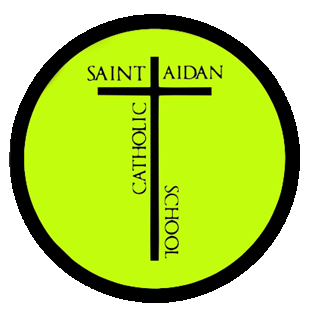
Our School
About Us
At St. Aidan Catholic School, we pride ourselves on the strong partnership that exists among the home, the school and the parish. We are a Kindergarten to Grade 8 elementary school and fortunately located next door to St. Aidan Catholic Church, where our staff and students join for Mass once a month.
We serve a diverse community and proudly welcome families new to the community and country. At the school there is an onsite daycare (St. Aidan Early Years Learning & Child Care Centre) for children aged 12 months to 4 years, and an Early ON Child and Family Centre for children from birth to 4 years old and their caregivers.
We value communication between home and school. Tools such as the student agenda book, emails updates, monthly newsletters and calendars assist in keeping parents informed about school activities, class activities, assignments, and important dates.

Our School History and Tradition
St. Aidan Catholic School opened in 1973 and is operated by the Toronto Catholic District School Board (TCDSB).
Aidan, our school’s patron saint, was born in Ireland. We first hear of him as a monk on the Scottish island of Iona. He studied under St. Senan and became a monk at Iona Monastery. He was soon called to Britain by King St. Oswald of Northumbria, who sought to convert his kingdom to Christianity. Having received consecration from the bishop in the monastery of Iona, Aidan chose the island of Lindisfarne as the seat of his bishopric. He soon became known for his knowledge of the Bible, his eloquent preaching, his holiness, his distaste for pomp, his kindness toward the poor and the many miracles attributed to his intercession. In many ways the island resembled Iona, and here was erected the first Christian church of the whole district.
He founded the Benedictine Monastery at Lindisfarne to educate many missionaries in their own country and established many missionary centres, wholeheartedly supported by his patron, the king. Aidan received from the kings and rich men many gifts, all of which he gave to the poor and the needy. He always travelled on foot, far and wide, visiting his flock, and he kept none of the gifts of land bestowed upon the church by the Saxon kings and nobles, being content with Lindisfrarne. He took a keen interest in the education of children, and the emancipation of slaves. Every church and monastery founded by him became a school where the English children received a comprehensive education from Aidan's monks.
St. Aidan made his teaching acceptable by his practice. King St. Oswald died a martyr in 642; his death was greatly felt by Aidan, but his successor, Oswin, who was also martyred in 651, was also dear to him. St. Aidan fell sick on one of his missionary journeys, and died the same year, on August 31, 651 at the royal castle at Bamburgh. His body was laid to rest in his monastic cathedral of Lindisfarne.
